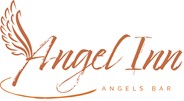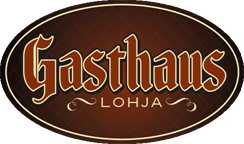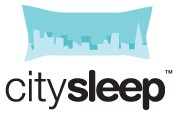Each year brings with it new challenges, but one that returns every year about this time as a hotel operator, is how to develop a distribution strategy for the year ahead to help drive rooms revenue up and bring operating costs down.
As a hotel operator big or small, you have to be ready to take the stresses and strains of a market that can rapidly twist and turn. There are so many variables nowadays that can affect market conditions, some are under your control but many are not.
For a long time, suppliers in the travel sector regarded themselves as service providers and let distributors handle the technology-intensive process of actually selling hotel rooms.
Online travel agents (OTAs) spotted the gap, and over time have become a force to be reckoned with as a significant distributor of hotel rooms.
Today, as well as the cost implications of OTAs, they do leverage their power to emphasize price as the primary product differentiator. But, they continue to attract hotel operators with the lure of the OTA’s power of distribution and reach.
The hotel distribution landscape continues to change at a rapid pace, and in order to keep up and succeed, hoteliers need to shift their focus on to guests and their experiences, according to a recent report from McKinsey.
McKinsey consider three factors that contribute to distribution dynamics: the proliferation of online travel agencies (OTAs) and loyalty programs, increased usage of mobile devices by consumers and the rise of disruptors such as Airbnb.
The consulting firm’s suggestion to succeed in this fast-changing environment are:
1. Harness advanced analytics to understand the customer better.
2. Adjust mobile offerings to capture, secure, and serve the customer.
3. Safeguard against future disruption.
Show me the numbers
In terms of analytics, years ago, a traditional approach to revenue management for those that practised it, was to look at historical data. To look out the window and gauge how your competitor across the street was performing and from there, apply any discounts or increases to your rates. And tweak, if necessary during the ups and downs of the year.
Today, particularly because of technology and the ever-growing choice of online channels, it has become increasingly difficult for hotel operators to keep pace with the level of complexity and volume of rate changes required to keep up with such a fluid market.
As an operator, if you cannot keep pace with the rate of change, you end up either over pricing and losing reservations or under-performing during peak occupancy and “leaving money on the table”.
Business requirements over experience
Historically some operators have focused more on managing costs rather than improving the customer experience, which has had serious implications.
With such a dynamic market, swamped with digital newcomers, operators need to have the guest experience as central to their strategy, but often fall short because of the focus on managing costs instead of growing a guest’s lifetime value.
The OTA market share is at an all-time high and climbing. OTA’s, and their huge brand building activities and mounting awareness amongst consumers, continue to drive a wedge between guests and hotel operators.
OTAs' share of the online travel market reached 39% in 2016 according to Phocuswright and will slowly continue to increase to 41% by 2020, with US$81.4 billion in online gross bookings.
Hotels now account for more than half of OTA domestic gross bookings and will continue to increase through 2020 as OTAs focus on growing the hotel segment and widening hotel inventory.
OTA’s as a channel tend to have a high cost of sales for hotels, but they provide reach by “casting a far wider net” to key feeder markets that you would not typically have access to.
The volume of online business today driven into hotels via OTA’s is both significant in its size and value, and growing.
So how can a hotel solve this ongoing distribution challenge?
Most hotel operators have woken up to the benefits of using data to help make pricing decisions.
With the advancements in technology slowly being adopted within the hospitality industry, effective revenue management methods now include a mix of old and new practices.
There is no doubt that pricing has always been used by operators to drive both occupancy and RevPAR. But, in today’s hospitality market with so much price transparency and buyer research, there is an even greater focus on having the right rate in place, the option to book direct and a plan on how to keep guests satisfied.
Whether you’re an owner, operator or chain of hotels, you need an approach to pricing and distribution that ensures you leverage every point of revenue from your room rates.
So, an important question to ask yourself is how can I improve the way that I manage my hotel’s revenue without having the time or money to invest in extra resources or an expensive revenue management system?
First of all, a strategic approach to your pricing is now an integral part of a successful hotel revenue management strategy.
Secondly, having access to software that enables you to facilitate direct bookings and put the guest experience back into focus.
Start with focusing on the customer.
Selling a room night isn’t the end of a hotel’s relationship with customers, it’s only just beginning - because every interaction with customers is an opportunity to foster their loyalty so that they select your hotel. So, you are only as good as the last point of contact that you shared with your guest, so make sure it is a positive one.
An integrated online hotel booking engine enables guests to book directly through the hotel website, a financial benefit from spending less on commission plus providing the operator with an opportunity to engage and build relationships.
Independent hotel operators are becoming far more proactive in developing their own direct booking strategy, because any reduction in the OTA commission costs will go directly to the bottom line as profit.
Plus, often the booking value of a direct reservation can be higher than that of an OTA booking as the profile of the guest may be somebody who is less price sensitive.
Take Away
Happybooking is first and foremost a property management system. That means they help you with the boring admin and automate tedious tasks giving you more time to focus on your guests. On average Happybooking customers can get back up to 10 hours per week – think what you could do with that extra time!
Our guest blogger is John Kennedy. John is a hospitality consultant, dedicated to helping increase profits through marketing, revenue management and efficient operations. www.kennedyandersson.com



